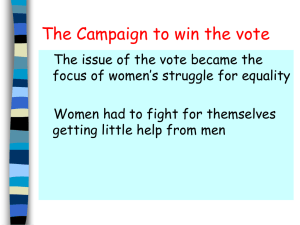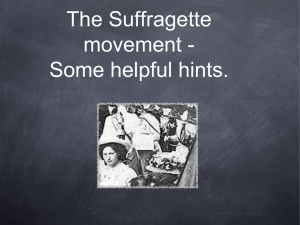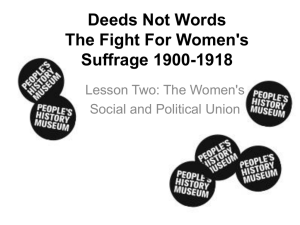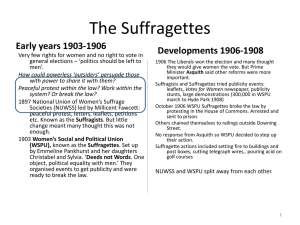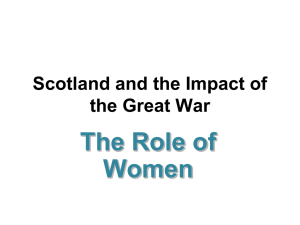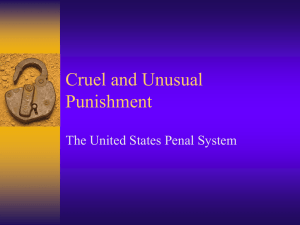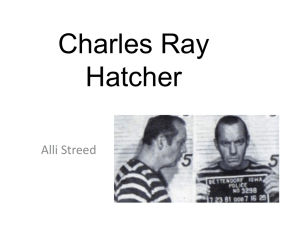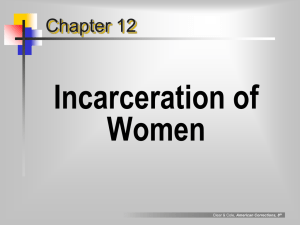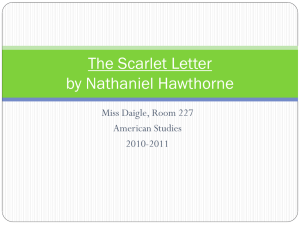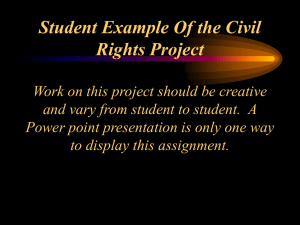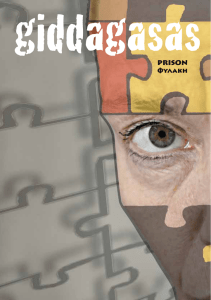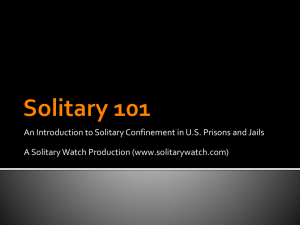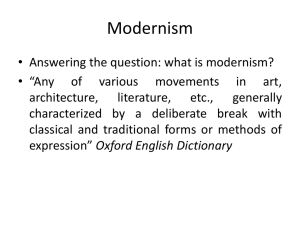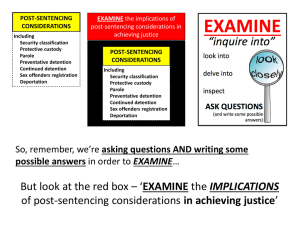Campaign for Women`s Suffrage
advertisement
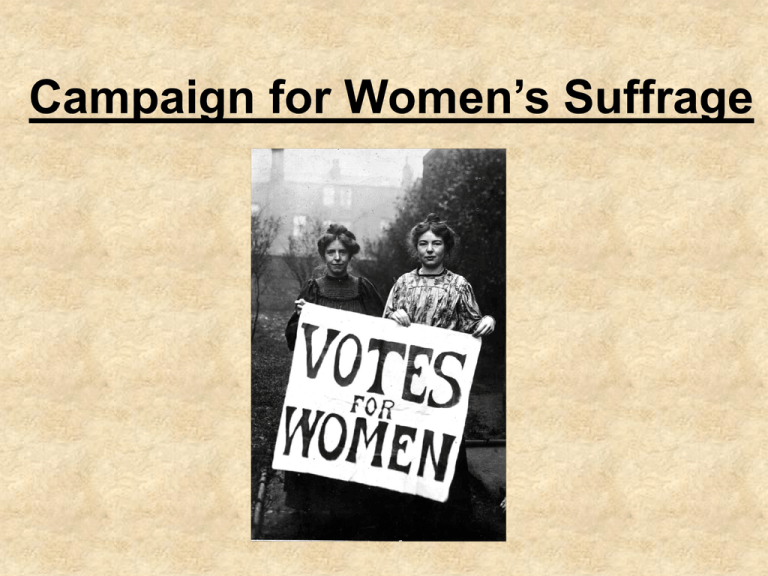
Campaign for Women’s Suffrage Convicts and Lunatics (1908) Suffragists • 1897 - Millicent Fawcett founded the National Union of Women's Suffrage (NUWS). • Believed in peaceful protest. Any violence or trouble would show men that women could not be trusted to have the right to vote. Her game plan was patience and logical arguments. • The NUWSS held public meetings, organised petitions, wrote letters to politicians, published newspapers and distributed free literature. • The main demand was for the vote on the same terms "as it is, or may be" granted to men. • By 1911 the NUWSS had 26,000 members In 1913 the NUWSS had nearly had 100,000 members • Millicent Fawcett argued that women could hold responsible posts in society such as sitting on school boards - but could not be trusted to vote; • She argued that if parliament made laws and if women had to obey those laws, then women should be part of the process of making those laws; • She argued that as women had to pay taxes as men, they should have the same rights as men. • Fawcett's progress was very slow. She converted some of the members of the Labour Representation Committee (soon to be the Labour Party) but most men in Parliament believed that women simply would not understand how Parliament worked and therefore should not be able to vote. Suffragettes • Emmeline Pankhurst formed the Women's Social and Political Union (WSPU) in 1903. • The main objective was to gain, not universal suffrage, the vote for all women and men over a certain age, but votes for women, “on the same basis as men.” • During the summer of 1908 the WSPU introduced the tactic of breaking the windows of government buildings. • On 30th June suffragettes marched into Downing Street and began throwing small stones through the windows of the Prime Minister's house. As a result of this demonstration, twenty-seven women were arrested and sent to Holloway Prison. On the 13th October, 1908 the WSPU held a large demonstration in London and then tried to enter the House of Commons. There were violent clashes with the police and 24 women were arrested, including Emmeline Pankhurst, who was sentenced to three months in prison. • On 5th September, 1909, suffragettes assaulted Herbert Asquith and Herbert Gladstone while they were playing golf. • Asquith was also attacked as he left Lympne Church that Sunday. • In November 1909, Theresa Garnett accosted Winston Churchill with a whip. She shouted "take that you brute", however, she later admitted she missed him. • In 1912 the WSPU began a campaign to destroy the contents of pillarboxes. • The summer of 1913 saw a further escalation of WSPU violence. In July attempts were made by suffragettes to burn down the houses of two members of the government who opposed women having the vote. • This was followed by cricket pavilions, racecourse stands and golf clubhouses being set on fire. • On 10 March 1914 Mary Richardson attacked a painting, at the National Gallery. "I dashed up to the painting. My first blow with the axe merely broke the protective glass. I was given time to get in a further four blows with my axe before I was, in turn, attacked." • Mary Clarke, was arrested for breaking windows and sent to Holloway Prison, where she endured a hunger-strike and forcedfeeding. • She was released on 22nd December, 1910 but two days later Emmeline Pankhurst found her unconscious and she died soon afterwards as a result of a burst blood vessel on the brain. • It has been argued that Clarke probably died as a result of being forced fed in prison. • Another long-term victim of force-feeding was Elsie Duval. In July 1912 she was sentenced to a month's imprisonment for breaking a window in Clapham. • While in prison she was forcibly fed nine times. Duval was arrested for "loitering with intent" on 3rd April 1913 and was sentenced to one month's imprisonment and once again went on hunger-strike. • When she died of heart failure on 1st January 1919, it was claimed that her heart had been weakened by the treatment she received in prison. • Lilian Lenton played an important role in the arson campaign. Along with Olive Wharry she embarked on a series of terrorist acts: • They were arrested on 19th February 1913, soon after setting fire to the tea pavilion in Kew Gardens. In court it was reported: "The constables gave chase … in one of the bags which the women threw away were found a hammer, a saw, a bundle to tow, strongly redolent of paraffin and some paper smelling strongly of tar. The other bag was empty, but it had evidently contained inflammables." • While in custody, Lenton went on hunger strike and was forcibly fed. She was quickly released from prison when she became seriously ill after food entered her lungs. • On 7th March 1913 Olive Wharry was found guilty and sentenced to eighteen months. "She was released on 8th April after having been on hunger strike for 32 days, apparently without the prison authorities noticing. His usual weight was 7st 11lbs; when released she weighed 5st 9lbs." Lilian Lenton http://www.bbc.co.uk/archive/suffragettes/8322.shtml • After Lilian Lenton recovered she managed to evade recapture until arrested in June 1913 in Doncaster and charged with setting fire to a house. In custody she immediately went on hunger-strike and was released after a few days under the Cat & Mouse Act. The following month she escaped to France in a private yacht. • "Lilian Lenton has stated that her aim was to burn two buildings a week, in order to create such a condition in the country that it would prove impossible to govern without the consent of the governed." • Lenton was soon back in England setting fire to buildings but in October 1913 she was arrested at Paddington Station. Once again she went on hunger-strike and was forcibly fed, but once again she was released when she became seriously ill. • Lilian Lenton was released on licence on 15th October. She escaped from the nursing home and was arrested on 22nd December 1913 and charged with setting fire to a house in Cheltenham. • After another hunger-and-thirst strike, she was released on 25th December to the care of a Mrs Impey Once again she escaped and evaded the police until early May 1914 when she was arrested again. She was only in prison for a few days before she was released under the Cat & Mouse Act. • In June, 1913, at the most important race of the year, the Derby, Emily Davison ran out on the course and attempted to grab the bridle of Anmer, a horse owned by King George V. • The horse hit Emily and the impact fractured her skull and she died without regaining consciousness. 1914 • By the summer of 1914 over 1,000 suffragettes had been imprisoned for destroying public property. • All the leading members of the WSPU were in prison, in very poor health or were living in exile. • The number of active members of the organisation in a position to commit acts of violence was now very small. On 4th August, 1914, England declared war on Germany. • Two days later the NUWSS announced that it was suspending all political activity until the war was over. • The leadership of the WSPU began negotiating with the British government. • On the 10th August the government announced it was releasing all suffragettes from prison. In return, the WSPU agreed to end their militant activities and help the war effort. • On 28th March, 1917, the House of Commons voted 341 to 62 that women over the age of 30 who were householders, the wives of householders, occupiers of property with an annual rent of £5 or graduates of British universities.
